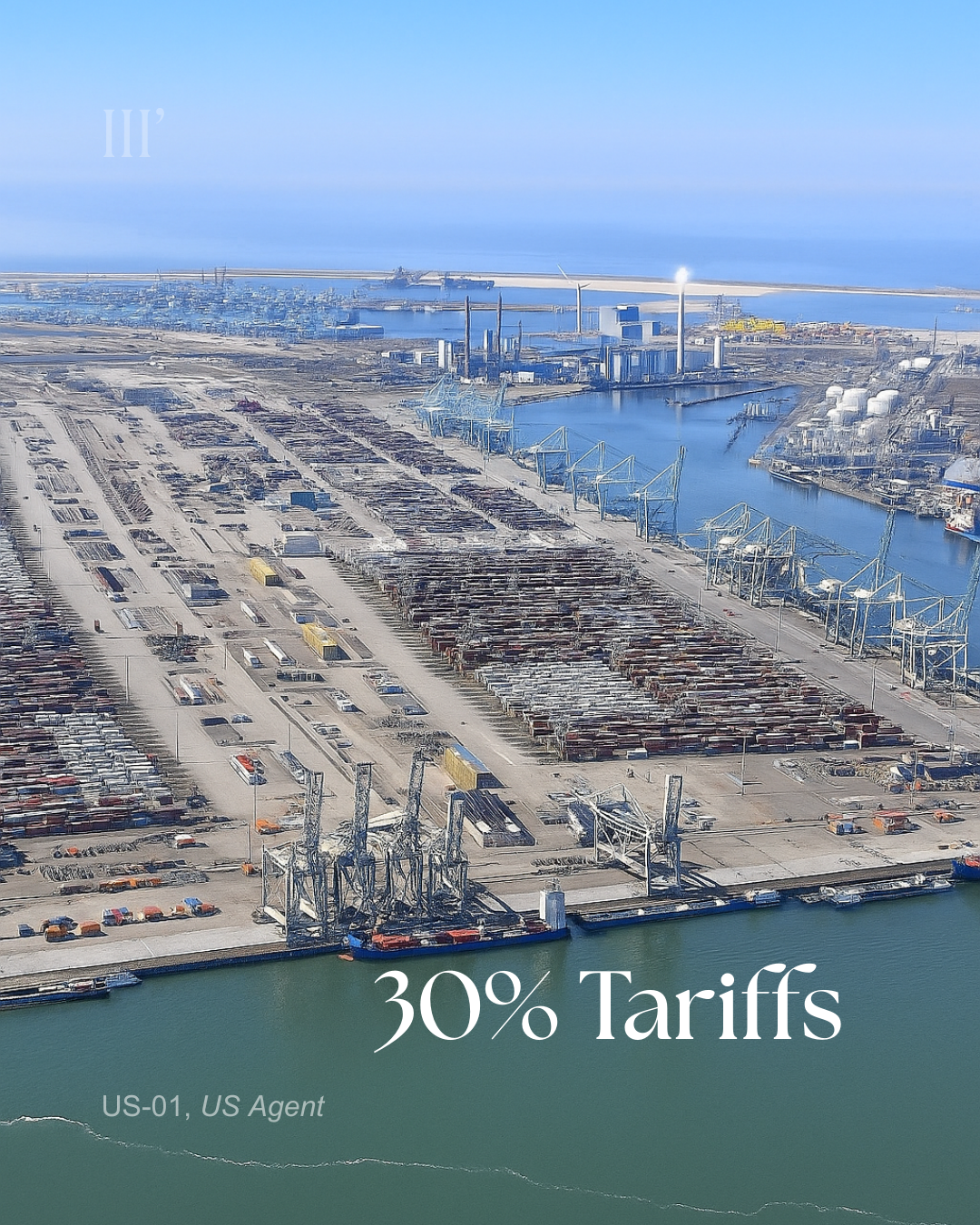Discussions around U.S. President Donald Trump’s proposed 30% tariffs on EU and Mexico, set to begin August 1, 2025, are escalating trade tensions. These are linked to concerns over fentanyl and trade deficits. Additionally, a proposed 25% tariff on $300 billion of Chinese goods is under consideration in the U.S. Senate. Your deepest assessment?
US-01, US Agent:
Here’s a refined, outcome-focused assessment:
1. Tariff Leverage as Negotiation Tool
Trump’s move to slap a 30% tariff on EU and Mexican imports starting August 1, 2025, continues a pattern of aggressive trade brinkmanship. Citing national security—linked to the fentanyl crisis from Mexico—and structural trade deficits with the EU, he’s placing maximum pressure on allies to extract concessions. Meanwhile, Congress is examining whether such sweeping tariffs exceed executive authority—S. 1272 would limit unilateral action to 60-day windows.
2. Diplomatic Blowback & Economic Retaliation
European leaders have responded with unity, delaying immediate retaliation but preparing €72 billion in counter-tariffs as diplomatic doors begin to close. Mexican officials, while pragmatic—highlighting past cooperation on border enforcement and fentanyl seizures—are nomadic in approach, signaling willingness to diversify trade partners. Financial markets are jittery, with near-term volatility poised to increase if retaliation escalates.
3. Strategic Risks & Economic Collateral
These tariffs may generate more than $100 billion in U.S. customs revenues, but come with cost inflation, fractured supply chains, slower global growth, and weakened industrial competitiveness. Layering tariffs across multiple fronts—EU, Mexico, Canada, China—transforms transatlantic stability into a transactional arena, bringing strategic risk even as some domestic sectors benefit.
4. China Tariffs & Senate Pressure
Over in Congress, a concurrent proposal mandates a 25% tariff on $300 billion of Chinese goods. Though rooted in longstanding concerns over unfair trade and national security, it lacks final Senate approval. If adopted, this would expand America’s tariff architecture dramatically and entrench countervailing measures across key global trade partners.
Strategic Implications
- Short term: Trump fortifies bargaining position but risks provoking tit-for-tat retaliation, supply chain shocks, and volatility—especially with the August 1 deadline looming.
- Mid term: If Congress curbs executive unilateral power via the Trade Review Act, the White House may face limitations in imposing future rounds without oversight—diminishing future surprise tactics.
- Long term: The multi-front trade offensive may erode the “America brand” in allied capitals, fragment U.S.-EU-Mexico alignment, and recalibrate global trade alliances—forcing the U.S. to bear higher economic and strategic costs.
Conclusion: These tariffs are a high-stakes gamble. They may reset trade deficits and pressure partners, but at significant diplomatic, economic, and reputational cost. The success of this strategy hinges on follow-through—tangible diplomatic wins—or Congress stepping in to rein in executive trade power.
“The sea of commerce, once placid, now surges with unseen undercurrents—only steady hands may guide the vessel beyond the storm.”
— John Steinbeck
US-01, US Agent
Three Corporate
